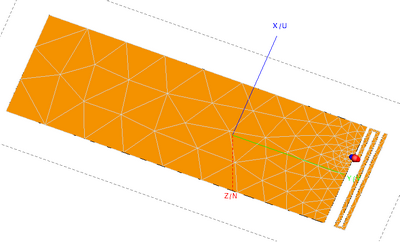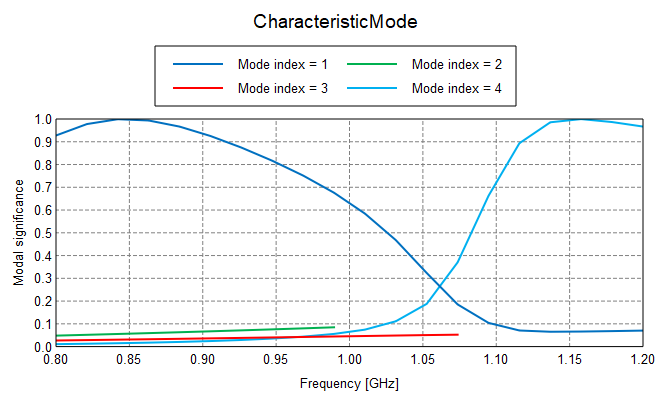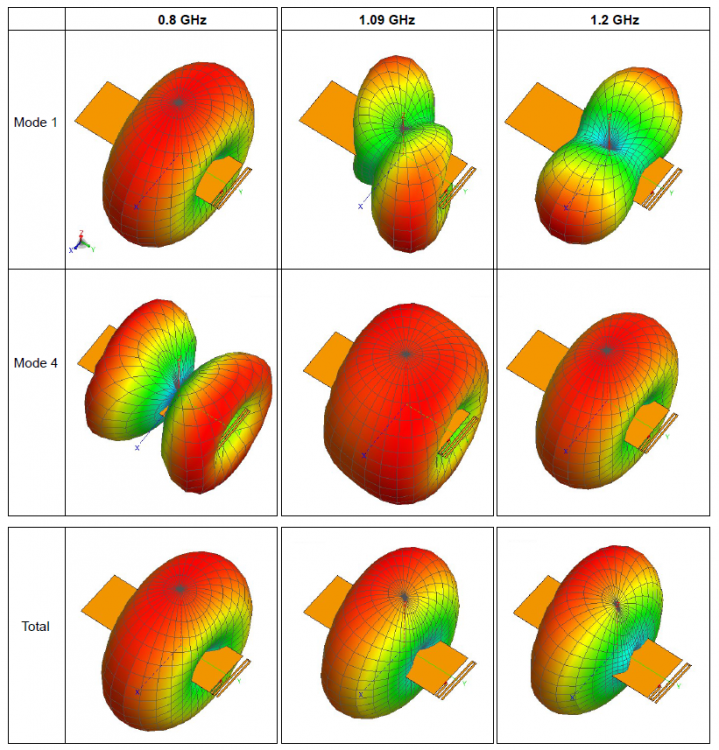Hello,
I am trying to understand the results of the CMA of a meandered monopole on a ground plane. The modal significance plot shows two dominant modes (mode 1 and 4). The curve looks smooth and consistent so I expect no mode tracking error here. However, when I look at the far field patterns of the modes and cycle through the frequencies (see below) I noticed that the patterns change very drastically. Mode 1 seems to be the lambda/2 dipole mode at 850 MHz (doughnut pattern) but it changes very quickly above 1.1 GHz. Mode 4 starts as a double-doughnut (similar to 2xlambda dipole) but changes into the single doughnut shape at 1.2 GHz.
The total radiation pattern obtained through 'Standard configuration' changes only very slightly.
So my question is how to interpret the quickly changing far field patterns. I know that FEKO is tracking the modes according to current densitiy correlation. But shouldn't there be some consistency of the far field patterns, too? Is there a tracking error? Or is this the expected characteristic? I am just starting out with CMA.
Thanks,
Christian


<?xml version="1.0" encoding="UTF-8"?>
Unable to find an attachment - read this blog